Category: Film
A History of Screenwriting – 43 in a series – Body and Soul – Oscar Micheaux (1925)
A History of Screenwriting – 43 in a series – Body and Soul – Oscar Micheaux (1925)
Oscar Devereaux Micheaux (US: /ˈɒskə.mɪˈʃoʊ/ ( listen); January 2, 1884 – March 25, 1951) was an African American author, film director and independent producer of more than 44 films. Although the short-lived Lincoln Motion Picture Company was the first movie company owned and controlled by black filmmakers,[1] Micheaux is regarded as the first major African-American feature filmmaker, a prominent producer of race film, and has been described as “the most successful African-American filmmaker of the first half of the 20th century”.[2] He produced both silent films and sound films when the industry changed to incorporate speaking actors.
Micheaux’s first novel The Conquest was adapted to film and re-titled The Homesteader.[5] This film, which met with critical and commercial success, was released in 1919. It revolves around a man named Jean Baptiste, called the Homesteader, who falls in love with many white women but resists marrying one out of his loyalty to his race. Baptiste sacrifices love to be a key symbol for his fellow African Americans. He looks for love among his own people and marries an African-American woman. Relations between them deteriorate. Eventually, Baptiste is not allowed to see his wife. She kills her father for keeping them apart and commits suicide. Baptiste is accused of the crime, but is ultimately cleared. An old love helps him through his troubles. After he learns that she is a mulatto and thus part African, they marry. This film deals extensively with race relationships.
Director:Oscar Micheaux
Writers:Oscar Micheaux (novel)
Oscar Micheaux (screenplay)
Paul Robeson … Reverend Isaiah T. Jenkins / His brother Sylvester
Mercedes Gilbert … Isabelle – the Girl Julia
Theresa Russell … Martha Jane – Her Mother
Lawrence Chenault … Yello-Curley’ Hinds – the Phony Reverends Former JailmateA minister is malevolent and sinister behind his righteous facade. He consorts with, and later extorts from, the owner of a gambling house, and betrays an honest girl, eventually driving them both to ruin.
Trivia
The board censors initially had strong objections to the dark and sinister portrayal of a man of the cloth. But with no money left for reshoots, producer Oscar Micheaux shot a quick ending which makes most of the film’s action a dream of the heroine’s.
Film debut of Paul Robeson.— Wikipedia
Learn more about Oscar Micheaux with these books
* A portion of each sale from Amazon.com directly supports our blogs *
* Many of these books may be available from your local library. Check it out!
I teach several classes for the Stephens College Low-Residency MFA in Screenwriting, including History of Screenwriting. In fact, I created the curriculum for that course from scratch and customized it to this particular MFA in that it covers ‘Screenwriting’ (not directors) and even more specifically, the class has a female-centric focus. As part History of Screenwriting I, the first course in the four-class series, we focus on the early women screenwriters of the silent film era who male historians have, for the most part, quietly forgotten in their books. In this series, I share with you some of the screenwriters and films that should be part of any screenwriters education. I believe that in order to become a great screenwriter, you need to understand the deep history of screenwriting and the amazing people who created the career. — Dr. Rosanne Welch
My Background from Giving Voice to Silent Films and the Far From Silent Women Who Wrote Them with Dr. Rosanne Welch [Video] (0:40)
Watch this entire presentation
A recording of my presentation at this year’s University Film and Video Association (UFVA) 2017 conference.
Transcript:
This is my background in the business. These are all the different shows that I worked on. Always with a focus on the female characters. How can I make the female characters stronger? I’m a girl. Interesting enough I have a boy — a son — and when I had him I thought, “Oh no, I’m supposed to have a girl so I can teach her to be a feminist.” and then someone went “No let me teach him to love a feminist.” and I thought, ‘Oh yeah.” So, and this is the stuff that I have written. Mostly focused on women — women in Doctor Who and how race is portrayed. Women in Aviation. I’ve just got a second encyclopedia set of women in History. I am part of the Women Screenwriters Encyclopedia and my latest book is on The Monkees and feminism in The Monkees because it was actually there in the show if you look hard enough.
Books Mentioned In This Presentation
- Without Lying Down
- Oscar Micheaux: The Great and Only: The Life of America’s First Black Filmmaker
- The Real Nick and Nora
- Doctor Who: The Writer’s Tale: The Final Chapter
- The Writers: A History of American Screenwriters and Their Guild
- Monster: Living Off the Big Screen
- “It’s the Pictures That Got Small”: Charles Brackett on Billy Wilder and Hollywood’s Golden Age
- Women Screenwriters: An International Guide
Follow Dr. Rosanne Welch
Twitter: https://twitter.com/rosannewelch
Instagram: https://www.instagram.com/drrosannewelch/
Podcast: Play in new window | Download
Subscribe: RSS
Kitties are ready to go to Stephens College’s Citizen Jane Film Festival this week and so are we!
A History of Screenwriting – 42 in a series – Within Our Gates – Oscar Micheaux (1920)
A History of Screenwriting – 42 in a series – Within Our Gates – Oscar Micheaux (1920)
Oscar Devereaux Micheaux (US: /ˈɒskə.mɪˈʃoʊ/ ( listen); January 2, 1884 – March 25, 1951) was an African American author, film director and independent producer of more than 44 films. Although the short-lived Lincoln Motion Picture Company was the first movie company owned and controlled by black filmmakers,[1] Micheaux is regarded as the first major African-American feature filmmaker, a prominent producer of race film, and has been described as “the most successful African-American filmmaker of the first half of the 20th century”.[2] He produced both silent films and sound films when the industry changed to incorporate speaking actors.
Micheaux’s first novel The Conquest was adapted to film and re-titled The Homesteader.[5] This film, which met with critical and commercial success, was released in 1919. It revolves around a man named Jean Baptiste, called the Homesteader, who falls in love with many white women but resists marrying one out of his loyalty to his race. Baptiste sacrifices love to be a key symbol for his fellow African Americans. He looks for love among his own people and marries an African-American woman. Relations between them deteriorate. Eventually, Baptiste is not allowed to see his wife. She kills her father for keeping them apart and commits suicide. Baptiste is accused of the crime, but is ultimately cleared. An old love helps him through his troubles. After he learns that she is a mulatto and thus part African, they marry. This film deals extensively with race relationships.
Micheaux’s second silent film was Within Our Gates, produced in 1920.[5] Although sometimes considered his response to the film Birth of a Nation, Micheaux said that he created it independently as a response to the widespread social instability following World War I. Within Our Gates revolved around the main character, Sylvia Landry, a mixed-race school teacher. In a flashback, Sylvia is shown growing up as the adopted daughter of a sharecropper. When her father confronts their white landlord over money, a fight ensues. The landlord is shot by another white man, but Sylvia’s adoptive father is accused and lynched with her adoptive mother. — Wikipedia
Learn more about Oscar Micheaux with these books
* A portion of each sale from Amazon.com directly supports our blogs *
* Many of these books may be available from your local library. Check it out!
I teach several classes for the Stephens College Low-Residency MFA in Screenwriting, including History of Screenwriting. In fact, I created the curriculum for that course from scratch and customized it to this particular MFA in that it covers ‘Screenwriting’ (not directors) and even more specifically, the class has a female-centric focus. As part History of Screenwriting I, the first course in the four-class series, we focus on the early women screenwriters of the silent film era who male historians have, for the most part, quietly forgotten in their books. In this series, I share with you some of the screenwriters and films that should be part of any screenwriters education. I believe that in order to become a great screenwriter, you need to understand the deep history of screenwriting and the amazing people who created the career. — Dr. Rosanne Welch
My Chapter in The American Civil War on Film and TV: Blue and Gray in Black and White and Color
I get so many books in the mail for me to distribute to reviewers for The Journal of Screenwriting that opening the daily deliveries is like having a birthday party every day – and then I forget that every now and then the book that arrives is one for which I’ve written something – an essay, a chapter, etc – and that brings an extra smile to my face.
Seeing my name in print never ceases to amaze me as it was a goal of mine from a very young age – hence my helming of the 8th grade newspaper at St. Pius X School, the 12th grade “Fourth Estate” at Bedford Senior High and the columns I’ve written for my college newspaper, The Cleveland Plain Dealer and The Los Angeles Times collectively.
Today I was pleased to receive The American Civil War on Film and TV: Blue and Gray in Black and White and Color edited by Doulas Brode, Shea T. Brode and Cynthia J. Miller – it has my chapter: “Hidden Behind Hoopskirts: The Many Women of Hollywood’s Civil War” and as Doug says in the Introduction, this chapter gave me a chance to focus on the portrayal of enslaved females for wherever there was a Southern belle in an old Hollywood movie, there, too would be her maid.
Granted, as a new collection of essays by scholars – and in hardback – the book costs $105 and there are no used copies out yet. But you can always ask your local or college library to stock a copy and then be the first to check it out!
From Amazon.com…
Whether on the big screen or small, films featuring the American Civil War are among the most classic and controversial in motion picture history. From D. W. Griffith’s Birth of a Nation (1915) to Free State of Jones (2016), the war has provided the setting, ideologies, and character archetypes for cinematic narratives of morality, race, gender, and nation, as well as serving as historical education for a century of Americans.
In The American Civil War on Film and TV: Blue and Gray in Black and White and Color, Douglas Brode, Shea T. Brode, and Cynthia J. Miller bring together nineteen essays by a diverse array of scholars across the disciplines to explore these issues. The essays included here span a wide range of films, from the silent era to the present day, including Buster Keaton’s The General (1926), Red Badge of Courage (1951), Glory (1989), Gettysburg (1993), and Cold Mountain (2003), as well as television mini-series The Blue and The Gray (1982) and John Jakes’ acclaimed North and South trilogy (1985-86).
As an accessible volume to dedicated to a critical conversation about the Civil War on film, The American Civil War on Film and TV will appeal to not only to scholars of film, military history, American history, and cultural history, but to fans of war films and period films, as well.
Remember the Ladies from Giving Voice to Silent Films and the Far From Silent Women Who Wrote Them with Dr. Rosanne Welch [Video] (0:56)
Watch this entire presentation
A recording of my presentation at this year’s University Film and Video Association (UFVA) 2017 conference.
Transcript:
This whole conference is about inclusion and convergence which made this topic seem useful to me and hopefully to you. I’ve always gone back from my childhood to learning about Abagail Adams — the woman who told John while you’re working on that Constitution, could you please “remember the ladies.” We tend to forget them in this town and int he history of this town. The other book that I’ve got there is “What Happens Next” which everyone uses in their classes and has a paragraph about the women that that entire book covers. He finds time to cover them in a paragraph and that makes my students crazy. They read 5 different books on the history of screenwriting and chronologically and they come to Frances last and they are like why, why have I not heard of her until now and that book was written in the middle so you know some men write books before that book came out. They didn’t know the women existed. Then they knew and they still didn’t’ write about them and it’s important that we are in these books. So. I thought that was my background.
Books Mentioned In This Presentation
- Without Lying Down
- Oscar Micheaux: The Great and Only: The Life of America’s First Black Filmmaker
- The Real Nick and Nora
- Doctor Who: The Writer’s Tale: The Final Chapter
- The Writers: A History of American Screenwriters and Their Guild
- Monster: Living Off the Big Screen
- “It’s the Pictures That Got Small”: Charles Brackett on Billy Wilder and Hollywood’s Golden Age
- Women Screenwriters: An International Guide
Follow Dr. Rosanne Welch
Twitter: https://twitter.com/rosannewelch
Instagram: https://www.instagram.com/drrosannewelch/
Podcast: Play in new window | Download
Subscribe: RSS
A History of Screenwriting – 41 in a series – The Wind – Frances Marion
A History of Screenwriting – 41 in a series – The Wind – Frances Marion
The Wind 1928 – 2015 Helictite live from resounding silents on Vimeo.
The Wind is a 1928 American silent romantic drama film directed by Victor Sjöström. The movie was adapted by Frances Marion from the novel of the same name written by Dorothy Scarborough. It features Lillian Gish, Lars Hanson and Montagu Love. It was one of the last silent films released by Metro-Goldwyn-Mayer, and is considered one of the greatest silent films.[1][2]
Gish came up with the idea of making a film adaptation of the novel of the same name. Irving Thalberg immediately gave her permission to do so. Gish recalled wanting Lars Hanson as her leading man after seeing him in a Swedish film with Greta Garbo. She also assigned Victor Sjöström as the director herself. Sjöström directed Gish before in the 1926 film The Scarlet Letter.[3]
The film was shot partially near Bakersfield and the Mojave Desert, California.[4]
In the original novel, the heroine is driven mad when the wind uncovers the corpse of the man she has killed. She then wanders off into a windstorm to die. According to Gish and popular legend, the original ending intended for the film was the unhappy ending, but it was changed due to the studio’s powerful Eastern office decreeing that a more upbeat ending be shot.[5] It is rumored that this tampering caused Seastrom to move back to Sweden. Mayer’s biographer rejects this on account that the “sad ending” is not known to exist in any form, written or filmed. Regardless of whether an unhappy ending was originally intended, in the resulting film the “happy” ending replaced the original ending against the wishes of both Lillian Gish and Victor Seastrom.[6] — Wikipedia
* A portion of each sale from Amazon.com directly supports our blogs *
* Many of these books may be available from your local library. Check it out!
I teach several classes for the Stephens College Low-Residency MFA in Screenwriting, including History of Screenwriting. In fact, I created the curriculum for that course from scratch and customized it to this particular MFA in that it covers ‘Screenwriting’ (not directors) and even more specifically, the class has a female-centric focus. As part History of Screenwriting I, the first course in the four-class series, we focus on the early women screenwriters of the silent film era who male historians have, for the most part, quietly forgotten in their books. In this series, I share with you some of the screenwriters and films that should be part of any screenwriters education. I believe that in order to become a great screenwriter, you need to understand the deep history of screenwriting and the amazing people who created the career. — Dr. Rosanne Welch
Join me at the Stephens College’s Citizen Jane Film Festival – Oct 26-29, 2017
Stephens College’s Citizen Jane Film Festival is fast approaching and the Stephens College MFA in Screenwriting will be out in force. Current MFA students will be presenting papers at the Festival, Stephens College will be sponsoring a production of a 5-minute film and hosting a live reading of the winner’s screenplay.
My husband, Douglas E. Welch, will be covering the event for me and the Festival, so watch my Twitter, Instagram and Facebook feeds for up-to-date information, photos and more.
Here are some of our big events:
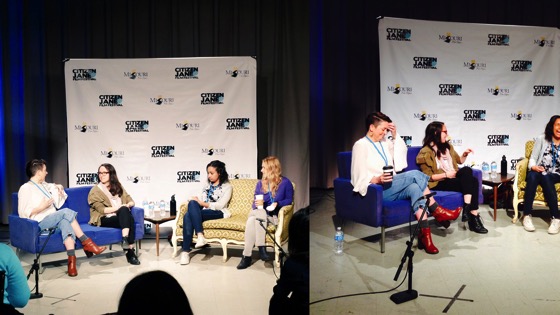
Citizen Jane Film School
An afternoon of educational- and fun!- film industry discussions!
Studio A @ Stephens College, 1405 E Broadway
11:00 AM
Screen Grab: From Screenplay To Big Screen, Who Will Win?
Judges: Sarah Haas, Ken LaZebnik, Steph Scupham, Kimberly Skyrme
Screenwriters vie for an exclusive production deal pitching their films to a panel of esteemed judges. The top five entries will be discussed and critiqued live before the audience. The winner will be announced before panel’s end. Producer, Sarah Haas, awaits to bring the project to life-a screenwriter’s dream come true!
3:30 PM
Bold Brash Words From Bold Brash Screenwriters
Moderator: Dr. Rosanne Welch
Panelist: Amy Banks, Krista Dyson, Cara Epstein, Betsy Leighton, Laura Kirk, Sarah Whorton
The Stephens College MFA in Screenwriting Program is proud to present six of our fabulous students who will introduce the audience to six female screenwriters whose bold, brash, brilliant words have enhanced our film experience, but whose names have been left out of the textbooks. Help us write them back in and remind us all that Women Ran Hollywood once and are on their way to doing it again!
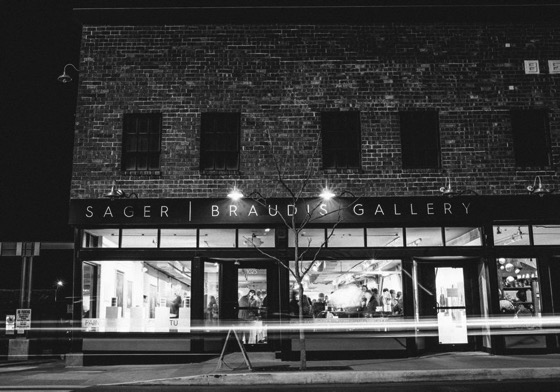
REHERSED: A CJ TABLE READ WITH GREENHOUSE THEATER PROJECT
Sager Braudis Gallery, 1025 E. Walnut
Sun / Oct 29 / 1:00 PM-3:00 PM
A staged reading of this year’s Screen Grab competition winner. Experience the art of Sager-Braudis Gallery, and watch as one of Columbia’s favorite theater companies reads a short screenplay. Refreshments provided by Harold’s Doughnuts and Fretboard Coffee.
Introduction from Giving Voice to Silent Films and the Far From Silent Women Who Wrote Them with Dr. Rosanne Welch [Video] (1 min)
A recording of my presentation at this year’s University Film and Video Association (UFVA) 2017 conference.
Transcript:
I teach the history of screenwriting, not film, to an MFA program for Stephens College, a low residency program. We do workshops at the Jim Henson Studios in Hollywood for 10 days twice a year and then the students do the rest of their work online. I’m also an adjunct at Cal State Fullerton, so I’ve had the pleasure of teaching all three of these gentlemen. So that’s been a lovely thing but I don’t teach this class there, so they haven’t actually seen me do this. With them, I’ve done screenwriting and workshopping, but here I’m going to talk about why I teach this class for a couple of reasons and I gave it this particular name, “Giving Voice to Silent Films…and the Far From Silent Women Who Wrote Them” – you’ll see that one of those books is by Carrie Beauchamp and it is, “Without Lying Down.” The life story of Frances Marion and the highest paid screenwriter in Hollywood in the entire Silent and early talkie period and none of my students have ever heard of her and I think it is very important that we hear about her and Anita Loos and a bunch of other important women.
I was pleased to be asked to participate in a panel designed by former student (and current kick-ass professor) Warren Lewis. The panel included two other former students from the MFA in Screenwriting program at CSUF: David Morgassen and Lucas Cuny. For the panel’s theme — “What Else Do We Teach When We Teach Screenwriting: Context And Controversy: Strategies For Teaching Film And Television History And Current Events To Screenwriters” — I chose to present on: “Giving Voice to Silent Films and the Far From Silent Women Who Wrote Them”.
It involves the fact that when teaching screenwriting history, I begin chronologically. In essence I force students to watch the classic films of the silent era (happily accessible for free on YouTube) first because that is when women ran the town as evidenced in Cari Beachamp’s Without Lying Down: Frances Marion and the Powerful Women of Early Hollywood”.) Beauchamp’s book is on my reading list so that they can encounter the careers of Frances Marion, Anita Loos, Lois Weber, Adela Rogers St. Johns, Eve Unsell and a host of other women who ran their own production companies for many years.
Secondly, knowing women once ran Hollywood makes it harder for today’s executives to wonder if today’s women can do the same.
Third, I have learned that teaching silent films reminds modern students that in screenwriting the visual is as important as the verbal.
Fourth, recognizing the birth of major iconic archetypes helps them recognize those archetypes in modern films and develop their own characters more three-dimensionally.
Fifth, I had to embarrassingly realize that in my zest to focus on forgotten females, I forgot to cover the careers of forgotten men and women of color and so expanded my viewing list to include the work of Oscar Mischeaux and other artists of color from the era.
Finally, I stretch back to the silents as a reminder that all artists stand of the shoulders of those who came before them – be they women or men.
Books Mentioned In This Presentation
- Without Lying Down
- Oscar Micheaux: The Great and Only: The Life of America’s First Black Filmmaker
- The Real Nick and Nora
- Doctor Who: The Writer’s Tale: The Final Chapter
- The Writers: A History of American Screenwriters and Their Guild
- Monster: Living Off the Big Screen
- “It’s the Pictures That Got Small”: Charles Brackett on Billy Wilder and Hollywood’s Golden Age
- Women Screenwriters: An International Guide
Follow Dr. Rosanne Welch
Twitter: https://twitter.com/rosannewelch
Instagram: https://www.instagram.com/drrosannewelch/
About Dr. Rosanne Welch
Rosanne Welch, PhD has written for television (Touched by an Angel, Picket Fences) and print (Three Ring Circus: How Real Couples Balance Marriage, Work and Kids and The Encyclopedia of Women in Aviation and Space). In the documentary world she has written and produced Bill Clinton and the Boys Nation Class of 1963 for ABC NEWS/Nightline and consulted on PBS’s A Prince Among Slaves, the story of a prince from West Africa who was enslaved in the 1780s, freed by order of President John Quincy Adams in the 1820s and returned to his homeland.
Welch teaches the History of Screenwriting and One-Hour Drama for the Stephens College MFA in Screenwriting. Writing/producing credits include Beverly Hills 90210, Picket Fences,ABCNEWS: Nightline and Touched by an Angel. In 2016 she published the book Why The Monkees Matter: Teenagers, Television and American Pop; co-edited Women in American History: A Social, Political, and Cultural Encyclopedia; and placed “Transmitting Culture Transnationally Via the Characterization of Parents in Police Procedurals” in the New Review of Film and Television Studies. Essays appear in Torchwood Declassified: Investigating Mainstream Cult Television and Doctor Who and Race: An Anthology. Welch serves as Book Reviews editor for Journal of Screenwriting and on the Editorial Advisory Board for Written By magazine, the magazine of the Writers Guild.
Podcast: Play in new window | Download
Subscribe: RSS






![My Background from Giving Voice to Silent Films and the Far From Silent Women Who Wrote Them with Dr. Rosanne Welch [Video] (0:40)](https://rosannewelch.com/wp-content/uploads/2017/10/ufva-03-background.jpeg)







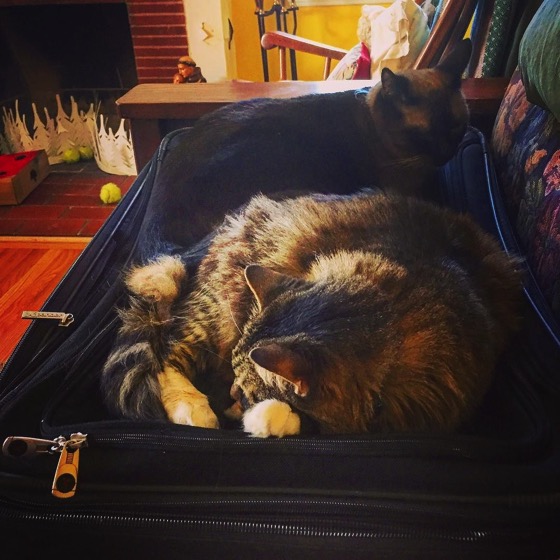



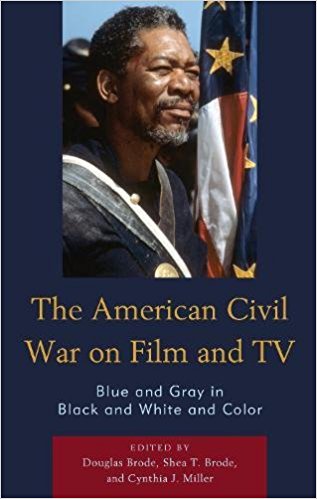

![Remember the Ladies from Giving Voice to Silent Films and the Far From Silent Women Who Wrote Them with Dr. Rosanne Welch [Video] (0:56)](https://rosannewelch.com/wp-content/uploads/2017/10/ufva-02-remember-ladies.jpeg)


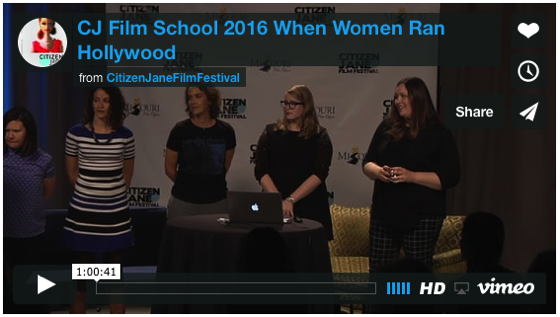
![Introduction from Giving Voice to Silent Films and the Far From Silent Women Who Wrote Them with Dr. Rosanne Welch [Video] (1 min)](https://rosannewelch.com/wp-content/uploads/2017/09/Slide01.jpg)